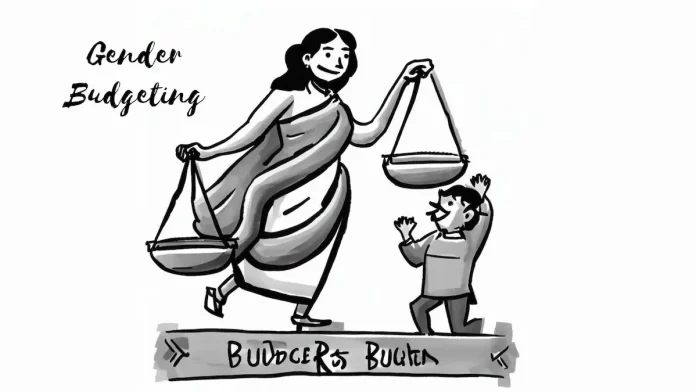Gender budgeting, an essential tool for achieving gender equality and social justice, has gained prominence in recent years.
By incorporating a gender lens into financial planning and budget allocation, governments can address the specific needs and challenges faced by women and marginalized communities.
This article explores the historical context, key facts and figures, scholarly opinions, current trends, and issues surrounding gender budgeting.
By understanding the importance of gender budgeting, we can foster inclusive societies that empower everyone to thrive.
Historical Context
The origins of gender budgeting can be traced back to the Women’s Liberation Movement in the 1970s.
Activists advocated for the recognition of unpaid care work, gender-based violence, and unequal access to resources and opportunities.
The UN’s adoption of the Convention on the Elimination of All Forms of Discrimination Against Women (CEDAW) in 1979 further underscored the need to address gender disparities.
In the 1990s, countries like Australia, Canada, and Sweden began pioneering efforts in gender budgeting. They recognized that budgets were not gender-neutral but influenced resource distribution and perpetuated inequalities.
These early adopters paved the way for other nations to integrate gender perspectives into their budgetary processes.
Facts and Figures
Studies consistently demonstrate the necessity of gender budgeting to rectify systemic inequalities. Globally, women still earn less than men, occupy fewer leadership positions, and experience higher poverty rates.
According to the World Economic Forum’s Global Gender Gap Report 2021, gender parity across all areas will take over 135 years to achieve at the current pace.
In India, a prominent example of gender budgeting, the government allocates funds specifically for women’s empowerment programs.
In fiscal year 2021-22, the Indian government allocated approximately INR 2.40 lakh crore ($32 billion) for schemes benefiting women, accounting for about 6% of the total budget.
This highlights the commitment to addressing gender disparities through targeted financial investments.
Scholarly Opinions
Scholars and experts from various disciplines have advocated for gender budgeting as a means to achieve sustainable development.
They emphasize the need to recognize and account for the diverse experiences, roles, and contributions of women and marginalized groups.
Gender budgeting allows policymakers to identify the specific needs of different demographics and allocate resources accordingly.
It enables better planning and implementation of policies that address gender-based violence, healthcare, education, economic opportunities, and social protection.
Additionally, by investing in women’s empowerment and gender equality, countries can enhance economic productivity and social cohesion.
Current Trends
Gender budgeting has gained significant traction worldwide. Many countries, including Australia, Canada, Sweden, and South Korea, have institutionalized gender-responsive budgeting practices.
In 2019, Rwanda became the first country in the world to achieve gender parity in parliamentary representation, partly due to its commitment to gender budgeting.
Furthermore, international organizations such as the United Nations, the World Bank, and the International Monetary Fund have recognized gender budgeting as an effective strategy for achieving sustainable development goals.
They have called for greater implementation of gender-responsive budgeting to promote equitable outcomes.
Gender Budgeting in India
India has made significant strides in implementing gender budgeting as a means to address gender disparities.
The country adopted gender-responsive budgeting in 2005, marking a crucial step towards ensuring the allocation of resources to meet the specific needs of women and marginalized groups.
The Union Budget of India now includes a separate statement on gender budgeting, highlighting the government’s commitment to promoting gender equality.
In recent years, India has witnessed an increase in budgetary allocations for gender-focused programs.
In the fiscal year 2021-22, the Indian government allocated approximately INR 2.40 lakh crore ($32 billion) for schemes specifically benefiting women.
This represented an increase of 13.4% from the previous year’s allocation, underscoring the government’s recognition of the importance of gender-responsive budgeting.
The allocation of funds for women’s empowerment programs has had a tangible impact on various sectors.
For instance, the government’s Beti Bachao Beti Padhao (Save the Girl Child, Educate the Girl Child) initiative aims to address gender-based discrimination and improve female literacy rates.
Under this program, a total of INR 19,065 crore ($2.5 billion) was allocated between 2014 and 2021, leading to an increase in the sex ratio at birth in several districts.
Issues and Challenges
While progress has been made, several challenges hinder the effective implementation of gender budgeting.
One key challenge is the lack of gender-disaggregated data, which hampers the accurate assessment of gendered needs and outcomes.
Governments need to invest in data collection mechanisms that capture gender-specific information to facilitate informed decision-making.
Additionally, there is a need for capacity-building among policymakers and budget officers to integrate gender perspectives effectively.
Training programs and workshops can equip them with the necessary knowledge and skills to mainstream gender concerns into budgetary processes.
Political will and commitment are also crucial for the success of gender budgeting initiatives.
Sustained support from policymakers, civil society organizations, and the public is essential to drive transformative change and ensure the allocation of adequate resources for gender equality programs.
With respect to India, challenges remain in ensuring effective implementation and monitoring of gender budgeting initiatives in India.
It is crucial to strengthen the mechanisms for monitoring the utilization of allocated funds and evaluating the impact of gender-responsive programs to ensure accountability and transparency.
By prioritizing gender budgeting, India continues to make progress towards achieving gender equality and empowering women.
However, sustained efforts, including capacity-building, data collection, and active participation from all stakeholders, are vital to maximizing the potential of gender-responsive budgeting in addressing the complex and multifaceted issues faced by women and marginalized groups in the country.
Conclusion
Gender budgeting is an indispensable tool for achieving gender equality, social justice, and inclusive progress.
By integrating a gender lens into budgetary processes, governments can address the specific needs and challenges faced by women and marginalized communities.
Through targeted investments and policy measures, we can create societies that empower everyone to thrive.
As more countries and organizations embrace gender budgeting, we move closer to a world where gender disparities are eliminated, and all individuals can participate equally in social, political, and economic spheres.
